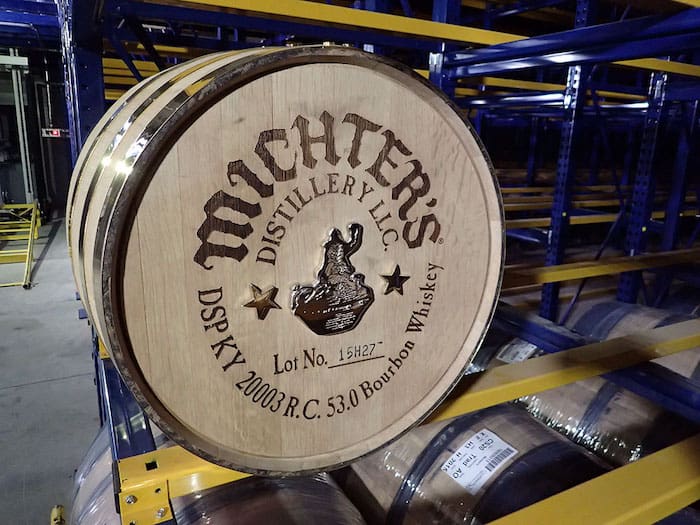To make a long story almost irresponsibly short, at one time, most American whiskey entered the barrel at drinking proof, somewhere around 50% alcohol. After Prohibition, regulations were changed in a way that ultimately encouraged distillers to use a higher barrel entry strength, up to 125 proof, or 62.5% ABV. For more about the historical context of these changes in barrel entry proof, check out Michael Veach’s excellent narrative on his blog.
Why does this matter? Because differences in the barrel entry proof of whiskey make a big difference in how it tastes, and have significant repercussions for distillery operations.
First, the lower the barrel entry strength, the faster the spirit ages. Solutions with different concentrations of alcohol interact differently with oak, extracting a broad range of flavors over a changing time horizon. The higher the barrel entry strength, paradoxically, the less rapidly extraction seems to occur. The more water in solution, the faster sugars from the wood are absorbed into the liquid, shortening the time required for maturation.

Second, the strength at which distillate enters the barrel has a significant impact on supply and production costs. The higher the alcohol content, the fewer barrels a distillery must buy, fill, and store to age their spirit. Lower barrel entry strength means more barrels and a bigger warehouse footprint.
Today, the craft whiskey industry has pushed discussions about barrel entry strength back into the spotlight For big distilleries able to absorb a longer aging span into their process and cash flow, it might make sense to bottle at a higher proof to save on barrels and space. But upstart craft distilleries, on the other hand, are enthusiastic about any tactic that can help them get good-tasting spirit out of their barrels faster.
Several newer distilleries are enthusiastic adherents of the low barrel entry strength strategy, including Colorado’s Leopold Bros. as well as the new-but-not-quite-craft Michters, which uses a barrel entry strength of 103 proof, a move it says makes “the best whiskey possible.”



